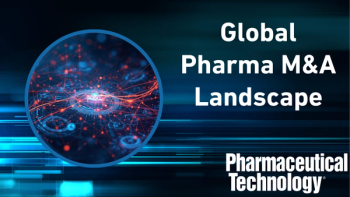
Equipment and Processing Report
- Equipment and Processing Report-07-22-2009
- Volume 0
- Issue 0
The Debate over Preuse Filter-Integrity Testing
Drugmakers have the common goal of manufacturing safe and sterile pharmaceutical products and understand that the filtration process is a critical means of achieving this goal. Preuse filter-integrity testing provides evidence that a filter will perform correctly, has the right pore size, and has been installed correctly.
Establishing a common goal is sometimes far easier than reaching an agreement about how to achieve that goal. Drugmakers have the common goal of manufacturing safe and sterile pharmaceutical products and understand that the filtration process is a critical means of achieving this goal. Preuse filter-integrity testing provides evidence that a filter will perform correctly, has the right pore size, and has been installed correctly. The European Commission requires this testing in Annex 1 of its good manufacturing practice (GMP) guidelines, and European inspectors are increasing their enforcement of the requirement, according to Michiel Rook, biopharmaceutical consultant and independent filtration expert at Global ConSeptS Consultancy (1). The US Food and Drug Administration, however, does not require preuse integrity testing, and some industry professionals question the need for it.
Those who argue against the need for preuse integrity testing point out that most filter vendors test the integrity of their products before they are shipped from the manufacturing facility. Filters could be damaged during transportation to the pharmaceutical company, however, and preuse integrity testing can detect this damage. Yet the chance that a filter would be damaged during transportation is “almost zero,” says Rook. Even disposable filters are now shipped in strong packages that withstand rough treatment, he adds.
Preuse integrity testing can also detect filter damage that occurs during steam sterilization, which is the most common cause of filter failure, says Maik Jornitz, group vice-president of marketing and product management for Sartorius Stedim North America (Bohemia, NY). But validating steam-sterilization cycles as required and staying within the filter manufacturer’s specifications should reduce the likelihood that such cycles will damage a filter, Jornitz says.
Some argue that the nature of the filtration process itself makes preuse integrity testing worthwhile. During filtration, a filter captures particles on its surface or within its matrix, says Russell Madsen, president of The Williamsburg Group and a member of Pharmaceutical Technology’s editorial advisory board. Particle entrapment decreases the filter’s porosity and diffusive flow, potentially leading personnel to believe that the filter integrity is greater than it actually is. In the absence of a preuse integrity test, a defective filter could conceivably allow bacterial penetration but pass a postuse test because of particle entrapment, says Madsen.
This situation is unlikely to occur, says Jerold Martin, senior vice-president of scientific affairs at Pall Life Sciences (East Hills, NY). “Particle loads are generally too low to plug filter defects large enough to allow bacterial penetration and cause false-pass integrity tests of nonintegral filters,” he says. Particulate and bioburden loads in presterilizing filtration feeds are typically low, especially during serial filtration. In addition, before a filter is shipped to a drugmaker, the filter manufacturer validates it to ensure that its pore structure does not change during sterilization and tests it to exclude oversized pores.
Some pharmaceutical manufacturers are averse to preuse integrity testing because it entails many changes to the downstream side of the filtration line. A filter must be flushed and wet before integrity testing, and the wetting fluid must be sent to a drain or contained in a tank or plastic container. Sterile air must be introduced to the filtration line, and the downstream side of the system must be maintained at atmospheric pressure without breaching the system’s sterility. These preparations can create a “Christmas tree” of additions to the filtration line, says Rook. “The more steps you add, the more manipulation you do, the more chance you breach the sterility,” he says.
But preuse integrity testing need not compromise downstream sterility. Instead of a manual integrity test that poses greater risk because it requires downstream manipulation, operators can use an automated instrument that performs the integrity test on the upstream side of the filter. Automated upstream integrity tests will not cause loss of downstream sterility, provided the filter is integral, says Martin.
Regulators should allow manufacturers to decide whether to perform preuse integrity testing, says Jornitz. Flawed filters are detected after filtration, and filtered product can be reworked or discarded, depending on its cost and whether the reprocessing is validated. “It’s an economic decision, not one involving higher safety,” Jornitz says. Modern filters are robust, and failures are uncommon, he adds.
Yet variables such as transportation, installation, and sterilization are significant enough to prompt some drugmakers to take the extra precaution of performing preuse integrity tests. These variables might have influenced the European Commission to mandate the tests. The future harmonization of regulatory standards might one day provide a single official answer to the question of whether the tests are needed to ensure drug and patient safety.
Reference
1. European Commission, EU Guidelines to Good Manufacturing Practice Medicinal Products for Human and Veterinary Use Annex 1 Manufacture of Sterile Medicinal Products (Brussels, Nov. 25, 2008),
Articles in this issue
over 16 years ago
Ensuring Accurate Humidity Measurement in CleanroomsNewsletter
Get the essential updates shaping the future of pharma manufacturing and compliance—subscribe today to Pharmaceutical Technology and never miss a breakthrough.




